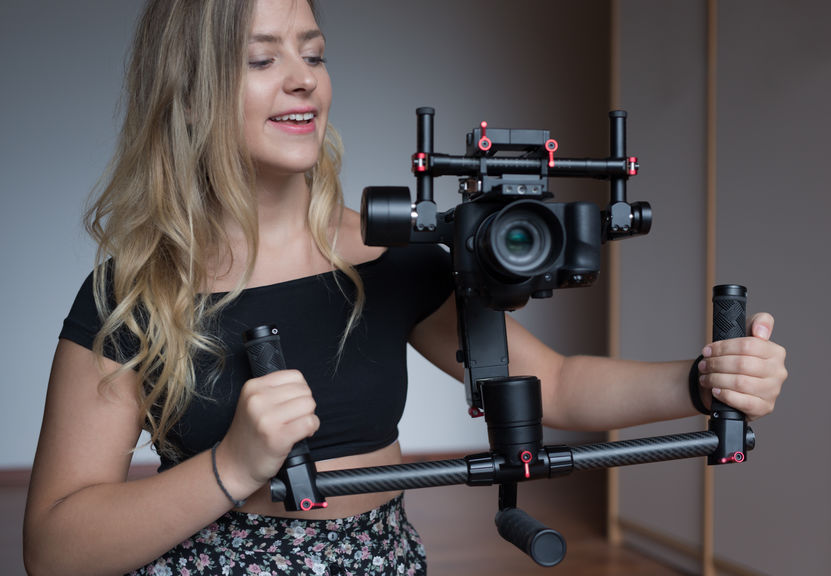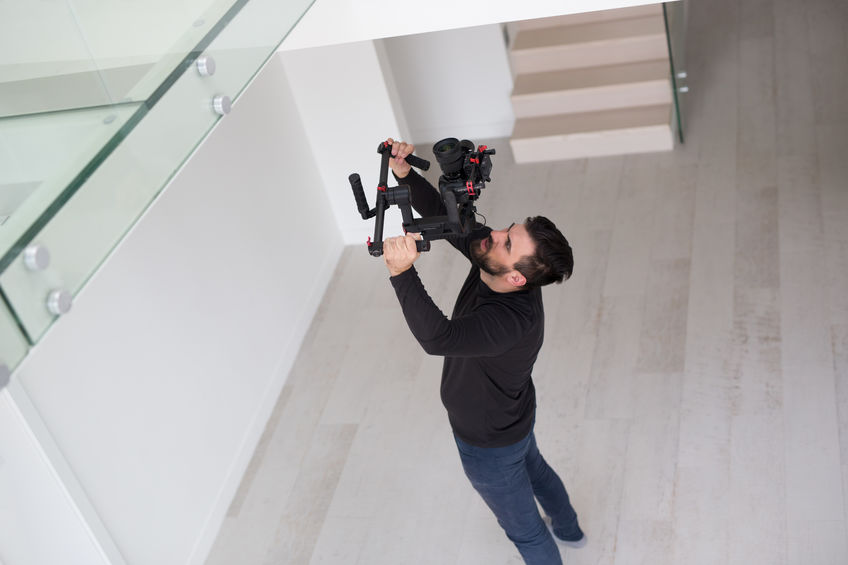YouTube is the number one platform for independent content creators. Many indie filmmakers and vloggers have found their voices on YouTube.
The great thing about YouTube is that content creators can put out work even with budget equipment. With the right knowledge, you can get pro shots even with a $300 camera.
But with many cameras – especially cinema cameras – lacking any kind of stabilization, i.e. in-body stabilization (IBIS) and Optical Image Stabilization (OIS), you need some kind of method of stabilization if you want that buttery smooth camera moves.
After the DSLR revolution let people shoot high-quality video content on a small DSLR camera, IBIS and O.I.S. have become more common to find in cameras. But even those methods of stabilization can only do so much in terms of reducing camera shakes.
So if you’re an indie filmmaker with a budget, a gimbal for your DSLR or mirrorless camera is a necessity.
A DSLR gimbal can help you get creative and nail those essential shots.
In this article, we show you how to get some great gimbal movements. Read on to learn some great gimbal skills and how to get some cinematic gimbal transitions.
What Is a Gimbal?

A gimbal is a device similar to a Glidecam that can help you keep a camera stable while shooting videos.
A gimbal helps you achieve smooth camera movements and transitions thanks to its rotating axis.
Before the invention of gimbals, filmmakers needed to craft their own devices to get steady camera movement. Camera operators had to film with tripods or with their hands. But the invention of the DSLR gimbal opened doors to more opportunities.
Thanks to its small size and portability, anyone can manage a gimbal with ease. Gimbals are useful devices that are much more convenient than old camera rigs.
DSLR gimbals also let you to take high-quality still images and often come with programmable modes, that let you shoot time-lapses and hyper-lapses.
When looking for a gimbal, choose one that’s compatible with your camera. We have a great post here that also includes in-depth information about which cameras are compatible with what gimbals.
What a DSLR Gimbal can and can’t do

Operating a camera with a gimbal allows you to get smooth movements with little to no energy. A gimbal is a light device that allows you to save energy during your video production. While gimbals are great third-party camera devices, they do come with some limitations.
As convenient as it is, a gimbal can’t replace professional filming equipment. A gimbal cannot offer the same capabilities that dollies, sliders, and jibs can. A gimbal can provide smooth tilts, rolls, and pans, but it cannot control vertical movement.
A gimbal cannot give you professional-looking videos overnight. A gimbal only helps you eliminate camera shake and unnecessary movement. But at the same time, these limitations can help you test your potential as a filmmaker.
To handle a gimbal like a pro, one must familiarize themselves with the equipment. You can invert or rotate your gimbals if needed. You also need to learn how to balance your gimbal.
A well-balanced gimbal allows you to consume less battery power. You also protect your gimbal by not overworking its motor. If you’re a proud new owner of a DSLR gimbal, read on to learn some great gimbal movements that you can incorporate in your videos.
1. Push-In And Pull-Out
Pushing in and pulling out is a classic dolly camera movement. You can mimic the movement by moving your DSLR gimbal forward at a steady pace. You can do this by simply walking forward or pushing your camera forward as you stand in place.
You can use this gimbal movement to capture steady or moving objects. By reversing the movement, you can perform a classic pull-out movement. Try walking backward as your subject approaches the camera.
You can upgrade this classic movement with some simple camera angles and tilting. You can do an underslung push-in or pull-out by sweeping the ground as you push in or pull out. You can get more interesting shots with this movement by tilting your camera high from a low angle or vice versa.
2. Parallax
A parallax effect is a unique camera movement that places focus on your subject. It separates your subject and background by moving at different speeds opposite of each other. Most filmmakers achieve this by using longer focal lengths.
Longer focal lengths compress images together so that the background appears closer. Using a gimbal can help you achieve this movement easier. With a gimbal, keep your subject centered on your frame while circling around it.
You can circle your subject at 180 degrees and even a full 360 degrees. You get a smooth orbiting movement, otherwise known as parallax. This movement works best at a normal and low mode.
3. Motion Timelapse and Hyperlapse
Timelapse cinematography is a long and arduous process. You set up your camera, set it to start taking photos at a set interval. And then you wait. And wait. And then wait some more.
Most subjects of motion time-lapses include the night sky, blooming flowers, or developing cloud patterns. Time-lapses reproduce and project frames at a higher speed rate.
If you like creating motion timelapse videos, a gimbal can help make your job easier. And also a lot faster.
You won’t have the same level of control as with a traditional timelapse, but the portability of a gimbal allows you to bring it to any travel route.
With its pan, tilt, and roll capabilities, you can achieve smooth motion time-lapses of the sky or city.
4. Moving Car Shots
Car scenes are unique camera shots that are very difficult to achieve. A moving car is a challenging environment to film in. It requires complicated rigs like a car mount.
With a gimbal, you eliminate the need to use a car mount. When you are shooting moving car scenes, sit out of the passenger seat with the gimbal in your hands. You can point or stick it out of the window.
Try mounting your gimbal on a miniature tripod. Hold the tripod down as you film your car shot. You can also use the gimbal’s axes to get more interesting shots.
5. Use a Gimbal on an Extension Rod to simulate a Crane Shot
A particular kind of shot often seen in Hollywood movies is the crane shot. Crane shots are great for transitioning from street level to an overview of a scene or vice versa.
But cranes are huge and very expensive.
But if you attach your gimbal to an extension rod or a monopod, you can easily simulate this move yourself for a bit of Hollywood magic.
You can also use this technique to create a fake drone shot in places where you aren’t allowed to fly a drone.
Use These 5 Pro Tips to Make the Most of Your DSLR Gimbal
A DSLR gimbal is a great tool if you’re looking to eliminate a camera movement. A gimbal can get you some great cinematic shots if you know how to use it well.
Practice the techniques described here and shown in the videos, and you’ll soon be able to pull out some cool cinematic moves with your gimbal.

